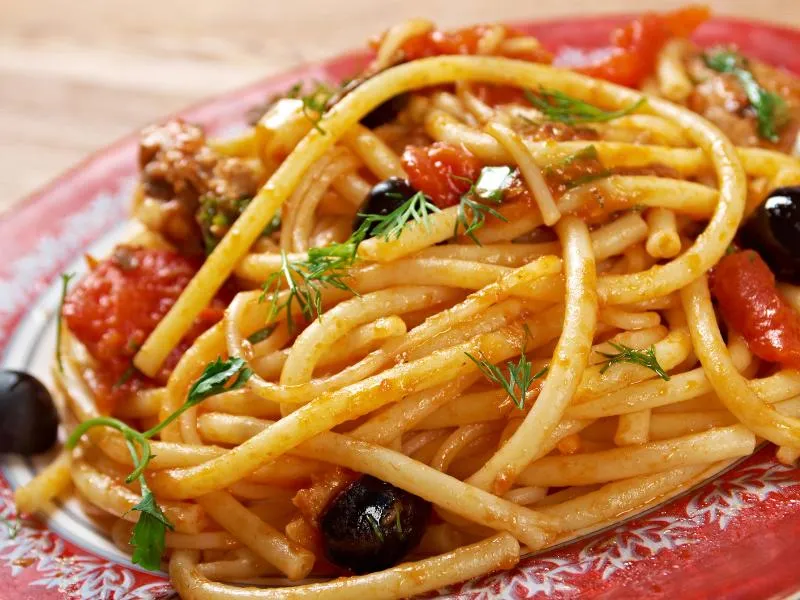Pasta alla Puttanesca
Spaghetti tossed with tomatoes, olives, capers, anchovies, and garlic in a bold, savory sauce.
👉 View Authentic Recipe 👈
About This Dish
Pasta alla Puttanesca originated in mid-20th century Naples (Campania), though its exact origins remain debated. The name’s provocative etymology (loosely translating to “in the style of a prostitute”) has spawned various origin stories, from being a quick meal prepared between clients to a dish made from pantry staples when ingredients were scarce.
This boldly flavored pasta sauce features a concentrated combination of pantry ingredients: ripe tomatoes (fresh or canned), briny olives (typically Gaeta or Kalamata), pungent garlic, salt-cured capers, and umami-rich anchovies. While traditional preparations use spaghetti, other long pasta shapes like linguine or vermicelli work equally well.
Puttanesca exemplifies the resourcefulness of Italian cuisine, transforming shelf-stable ingredients into a complex, satisfying dish. Despite its relatively recent origin compared to other classic Italian recipes, it has become a staple across Italy and internationally, celebrated for its simplicity and bold flavor profile that requires no fresh ingredients.
🧑🍳 Analyzed by CucinaBot
Why This Dish Works
Puttanesca’s culinary brilliance lies in its perfect balance of flavor compounds: the umami depth from anchovies and tomatoes, acidity from tomatoes and capers, saltiness from olives and capers, and pungency from garlic. The sauce’s minimal cooking time allows each ingredient to maintain its distinctive character while creating a harmonious whole. The olive oil base helps carry fat-soluble flavor compounds, enhancing the overall taste experience.
Key Success Factors
- Proper Garlic Treatment: Cook garlic until fragrant but not browned, as bitter notes will overpower the dish
- Anchovy Integration: Ensure anchovies fully dissolve into the oil to distribute umami flavor throughout
- Ingredient Balance: Maintain proper proportions between capers, olives, and anchovies to avoid any single flavor dominating
- Al Dente Pasta: Cook pasta firmly and finish in the sauce to allow proper sauce adhesion
Common Pitfalls
Many non-authentic versions mute the dish’s characteristic boldness by omitting anchovies or using too few olives and capers. Another common mistake is overcooking the sauce, which reduces the distinctive briny flavor of the olives and capers and can turn the dish into a generic tomato sauce. Authentic puttanesca should be rustic and chunky, not smooth and homogeneous.
How to Judge Authenticity
When reviewing recipes, look for these markers of authenticity:
- Includes anchovies as a non-optional ingredient
- Uses whole olives (preferably Gaeta or Kalamata), not sliced or green varieties
- Specifies salt-packed capers (or brined capers rinsed well)
- Minimal herb usage (perhaps parsley, never basil)
- Simple technique with relatively quick cooking time (under 30 minutes total)